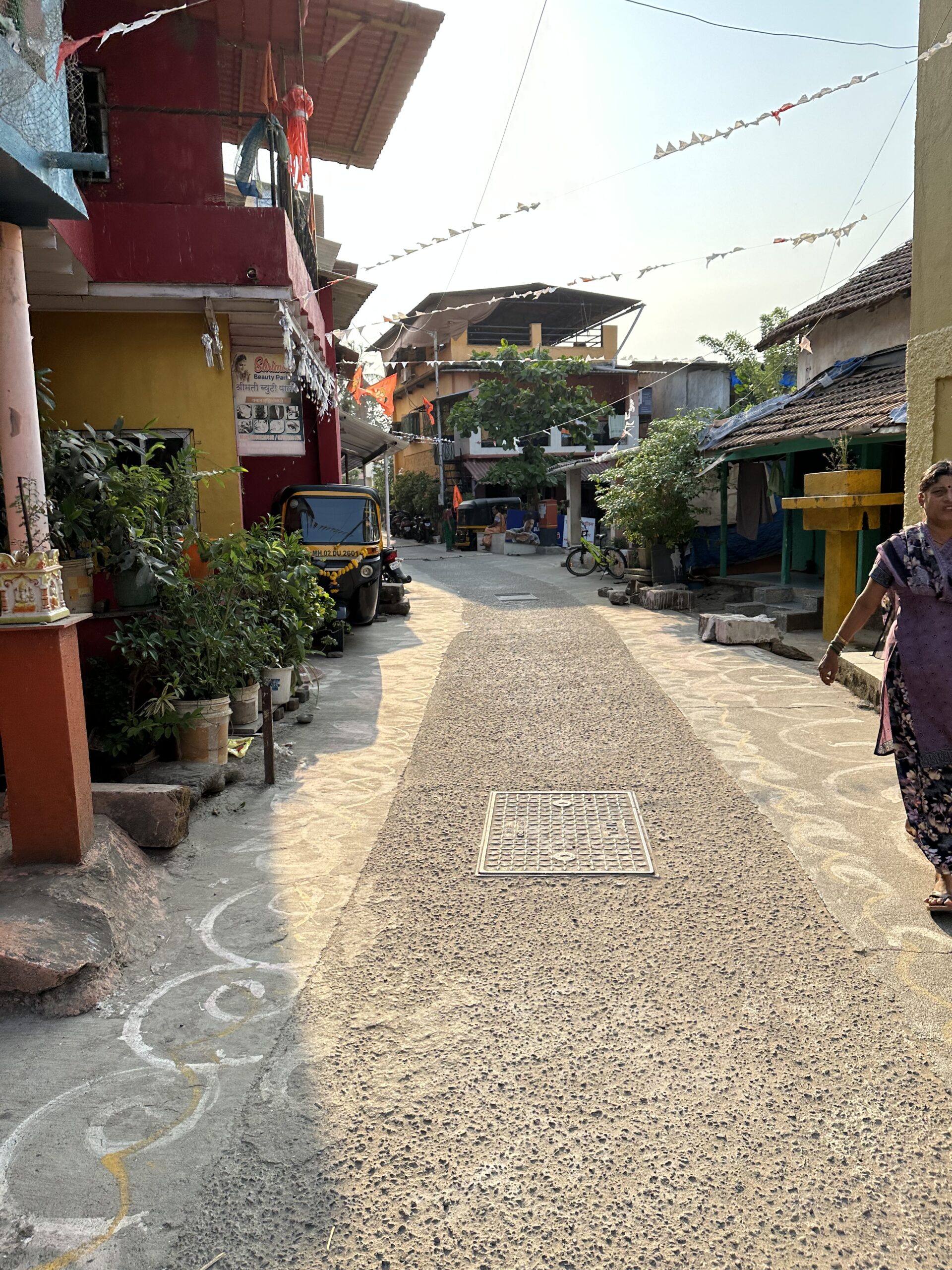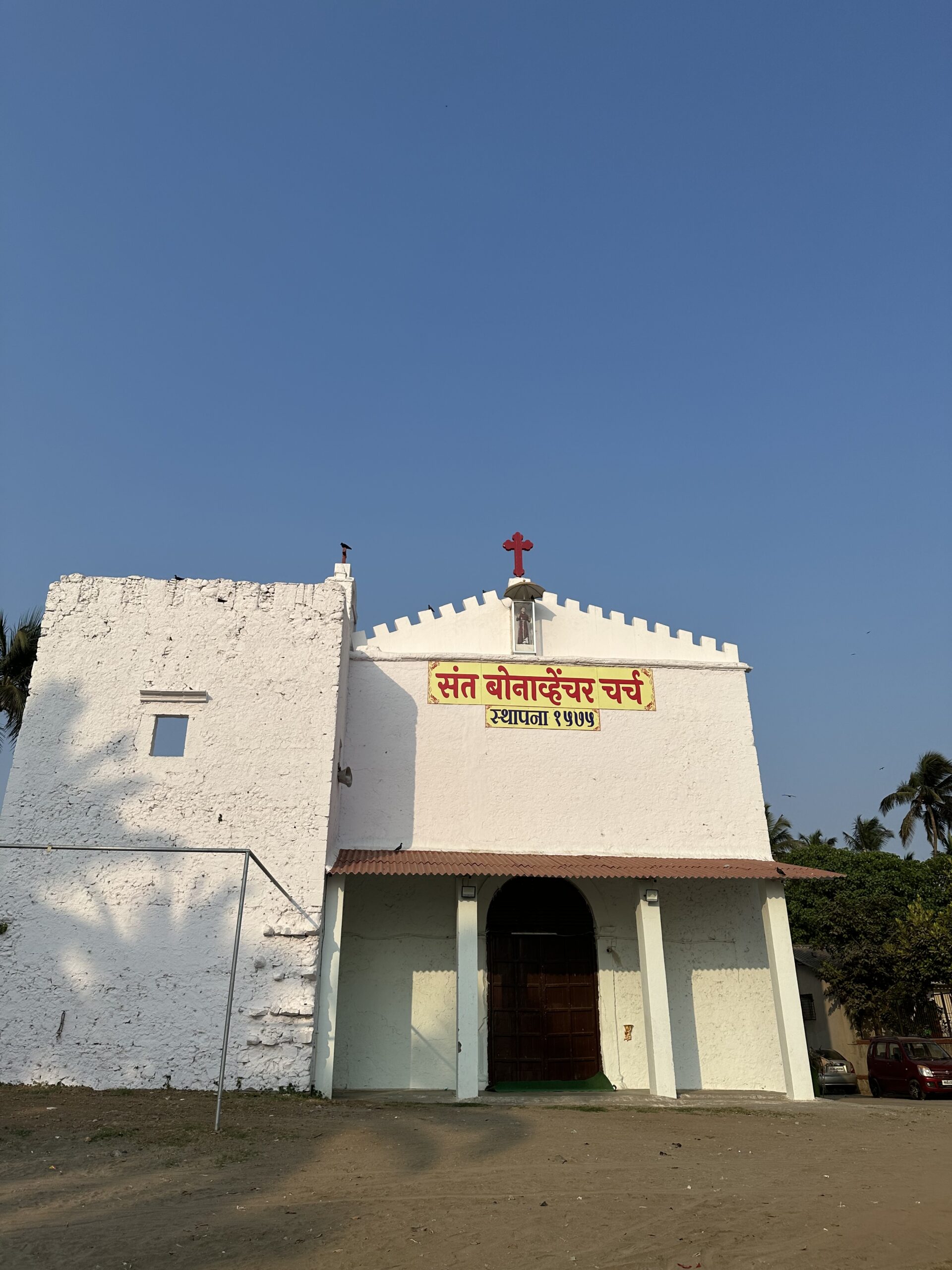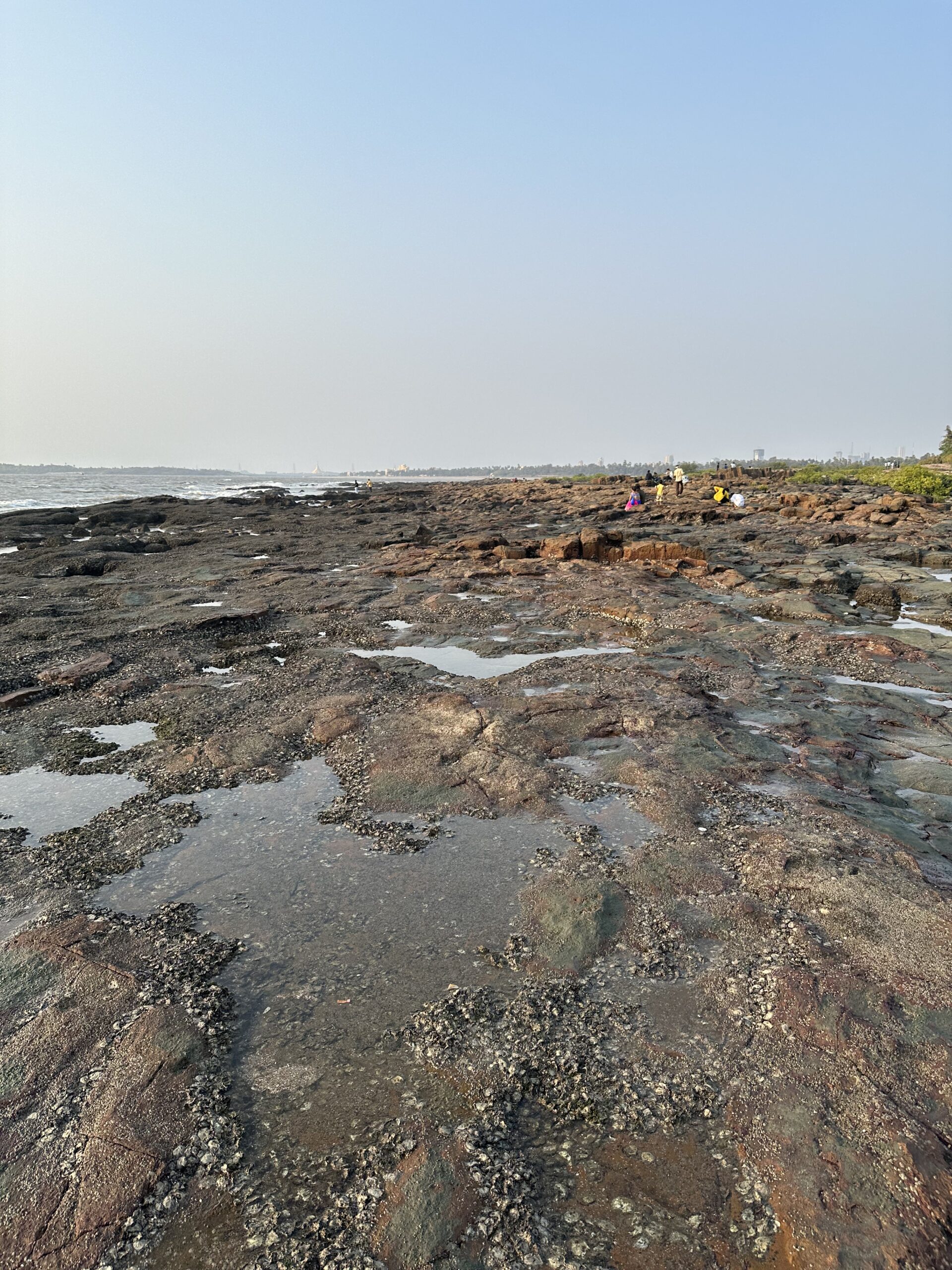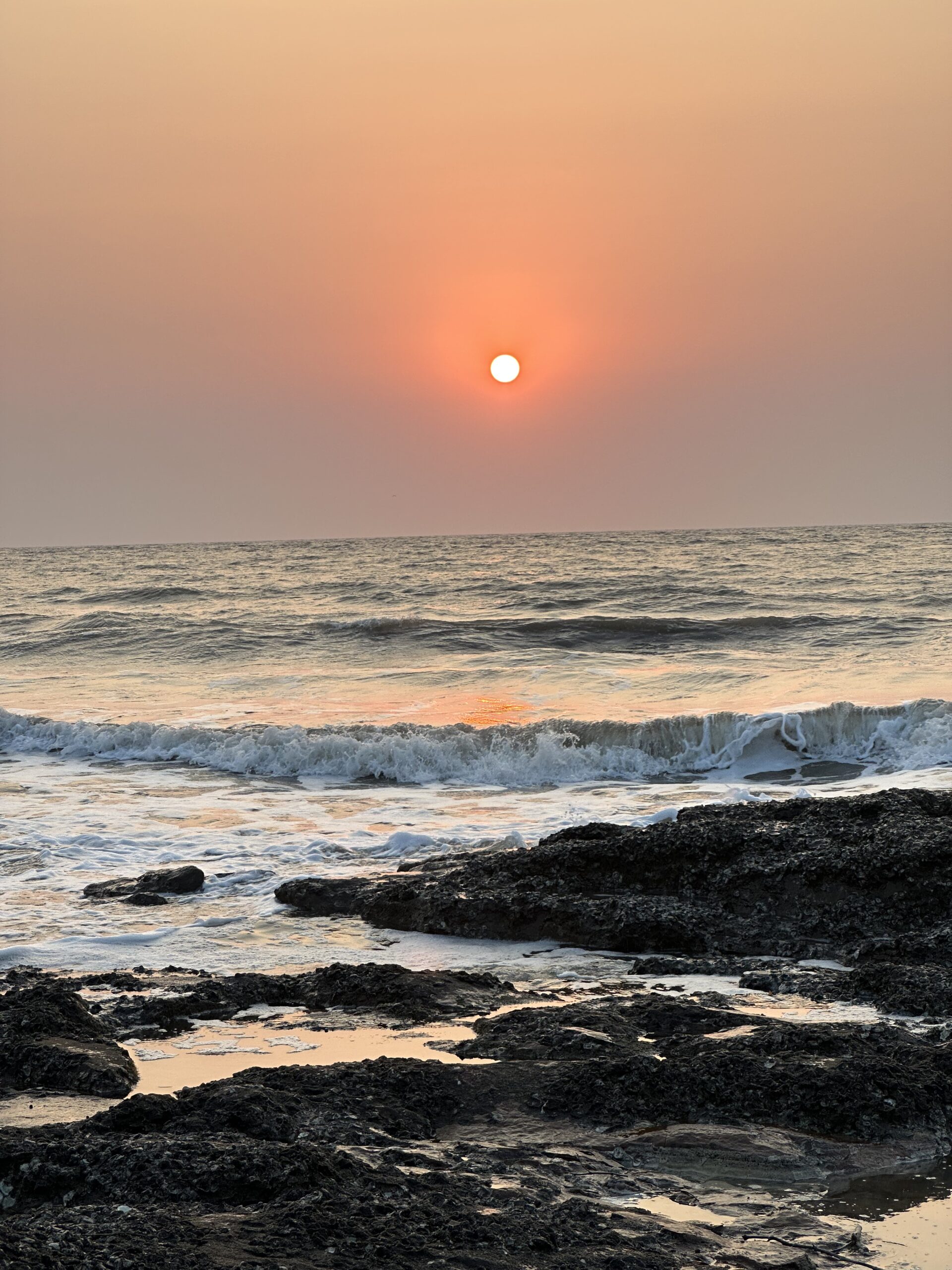There are a few places in Mumbai which have endured the onslaught of development and stuck to their original forms. The reasons behind them vary but the villages of the Northern coast have retained their original character for decades. Even though there are now plans to convert them into eco-tourism centres, these plans have always been around.
When we first visited Aksa beach, it seemed like a different world. We called it mini Goa, thanks to the obvious Portuguese influence clearly noticeable across the neighbourhoods in terms of architecture, social customs and even names. The greenery, the bungalows and the quiet beaches were all reminiscent of Goa. I remember having many adventures by the beach. Back then too it was a treacherous sea and even the lagoons that formed on the beach were dangerous. One time my cousin Pri and I were playing about near the lagoon one moment and the other moment, she was rapidly slipping into the lagoon which was deeper than we anticipated. We had to pull her out with all our strength and ensure that we stayed many feet away from such formations. In any case, this was our introduction to the sea in many ways. And we would troop over to make sand castles every other weekend inspite of the dangers of the sea.
A few years later I joined the Sea Cadet Corps and began my seamanship training at the INS Hamla. Even then visiting a naval base of such high importance always filled us kids with pride. Thanks to SCC, I learnt sailing and sailed in the Arabian sea. Oh what a treat that used to be, to take the Enterprise class of boats for a spin into the sea. With a few manoeuvres of the main sail, you could tame the wind and use it to your advantage to zip forward.
Of course, knowing about sailing and actually sailing are two different things. But both are rewarding. Years later when we launched sailing in the Bombay harbour for Breakfree – all this knowledge came back and proved to be useful. Although the dream to own a small sailboat still remains unfulfilled.
So one evening last week, when I saw a window of opportunity to escape, I took it. I have spent considerably less time by the sea in the last few years, and I am now determined to make good of it. So I boarded the 269 (AC) to Erangal from Borivali station. I don’t know why but I was keen on visiting the church of St. Bonaventure this time.
The 269 has been one of my favourite routes because that’s the bus I would take every Sunday morning as a boy to go to INS Hamla. It would be filled with only us Sea Cadets, a sea of blue in the morning red bus. It takes a long circuitous route passing Vajira Naka, Gorai, Charkop, Hindustan Naka, and then gets onto the Marve Road at Malwani, to cross villages of Kharodi, Rathodi, Malwani Church and then takes the left at Marve and goes all the way to Madh island. I was surprised to see that it was now an AC route and for 20 rupees, I could travel comfortably along this somewhat scenic route upto Erangal.
Erangal village is primarily occupied by the Saishav Kshatriya Bhandari Samaj, mainly fishermen. It is a typical fishing village with independent houses with a verandah and a strong sense of community. A 2010 study done by the MMR HCS has captured the social and physical geography in detail. The project plan and initial findings can be seen here. The small precinct is a colourful village dotted with brightly painted houses, with a tulsi vrindavan in the courtyard.
The church of St. Bonaventure is of prime importance in this village. It is said to have been erected in the 16th century. By the time I reached the sun was still high up in the western sky and the villagers were resting. Two women sitting near the big well guided me to the church.
Though I had visited Erangal in 2014, I wanted to be sure. They told me the church is likely to be shut but I could wake the caretakers up and ask them to open it. I thanked them and walked down to the coast. As they had said the church was locked but I could not find the caretaker around. Even the last time we had to request them to open it for us. The church looked better maintained than the last time. And I noticed some good construction inside the courtyard with a nice shelter and designated rooms for various activities.

Every second Sunday of January, the village comes alive for the feast of St. Bonaventure, Erangal Fair or Jatra as it is known is a very popular festival and the BEST runs special buses on this route for the pilgrims and visitors. For the East Indian community, this is is an important day and over 50,000 visitors come to the village to pay their respects and participate in the festivities.



The beach is flanked by the bandar or the port where the fishing dock is located on the south end, while on the north, you have a rocky beach which extends and curves over to the Dana Pani beach. A friendly dog accompanied me as I took a walk by the beach, he wouldn’t let me pet him but wanted to accompany me everywhere. I was disappointed to not find anything to feed him in my otherwise well stocked bag. So I took him along for a stroll.



After spending some time at Erangal, I decided to find a quieter spot up north at Dana Pani and wandered back to the main road to get an auto to take me there. I had last visited Dana Pani in 2004, 20 years ago when the Sea Cadets were invited for a Badakhana at the small naval outpost at Dana Pani. We had walked from INS Hamla to Dana Pani along with the then CO – Lt. Commander Gurmukh Singh. I still remember him telling me that I could give the NDA exam and become an officer like him at the age of 18, but I would need to be good at physics and math – both not my strong points. So instead I wrote the CDS and appeared for the SSB for the Indian Army, many years later. But that is a story for another time.
On the Dana Pani beach road, I crossed many small and big bungalows – one of them which was commonly seen in movies. I recognised it as Dr. Asthana’s residence in Munnnabhai MBBS. The auto driver dropped me all the way to the south end of the beach.

While the road goes further into the outpost, it is blocked for civilians. As you enter the sea, you see the remains of an old bastion – another watchtower of the Portuguese era standing solemnly. This part is mostly frequented by college going kids who come down here to sip a few beers. Though the cops make their rounds and drive them away, the frequent visitors seemed to have figured out their timetable and were drinking quite leisurely. I turned to the other end – the rocky outcrop where a few couples, some families and college kids were hanging out.

I slowly navigated over the rhyolites – severely eroded by the waves and covered with barnacles and found a spot as close to the waterline as possible. I wanted an unobstructed view of the horizon. To my right was the small island of Manori, which to our younger selves always seemed like Kirrin Island – from the Famous Five Novels. Beyond that shining in the golden hour was the Global Vipassana Pagoda of Gorai and further to the right was the coast of Marve, INS Hamla and of course, the main beach of Aksa.
The basalatic rocks which I sat on, are commonly seen in the coastal areas which are an extension of the deccan traps – which make up for the western coast. Oblivious to the world, I sat on the spot listening to the waves and watched the sun slowly makes its way to the horizon. It was a beautiful evening.
One sandpiper flew very fast over the sea and then settled on a nearby rock, twerking its tail. An egret with its shendi – a sign of a breeding plumage that appears on the back of its head, kept scouring for some evening snacks. Two crabs hid under the rocks, a few feet away from me. They lowered their pincers only after many minutes, once they realised I meant no harm and went about scuttling around their rock.
A few crows flew about but got bored when they realised I had nothing to feed them. A few more couples and groups came by and they all cozied up with each other. I penned down a few lines in my notebook, inspired by the sea and the sun. A group of friends posed against the setting sun and took pictures for their social media pages.



Some of the other boys fooled around and spoiled the silence. But the evening breeze was strong enough. The sea had just begun to retreat at that hour so the waves were still crashing over on the rocks, a few meters from where I sat. The horizon was clear. A small boat made its way towards the setting sun, hoping for a small gift from the infinite sea. There were no aircrafts flying as they do at the Bandra shore. A few birds were flying back home and I could see clearly all the way upto the temple on the hill in Manori island.
For more than an hour, I enjoyed the meditative sounds of the sea. A spectacular sunset followed. And I managed to write down a few pages. When the sun disappeared, I stood up and slowly walked back to the sandy shore. I was glad that I had chosen to come down here after 20 years. It had brought back many memories. The street running parallel to the sea had a nice parapet overlooking the mangroves and the sea, and made for a nice spot to sit and watch the sunset for those who didn’t want to go down to the sea. It felt good to see such spaces exist in the city.

As I climbed up the street which led to the main road, I took one last look at the sea and promised to return soon. At the yogashram bus stop, I again caught a 269 and came back home with good memories.
Planning your visit:
Getting there:
- Buses run from Malad Station/Madh Island- 272 and Borivali 269 AC
- If you are coming from Andheri, take the ferry from Versova to Madh Island and then an auto/bus to Erangal/Dana Pani
Stay:
- Multiple stay options – of all budgets – lodges, resorts and hotels are available in case you want to spend a night
Best time to visit:
- Sunset or early mornings are recommended time to visit.
- Be careful while walking on the beach as the rocks and the sand are littered with broken glass.
- Entering the sea is not recommended as it is known to be risky and many drown in the waters here. While there are lifeguards available at Aksa, I didn’t see any at Erangal or Dana Pani.